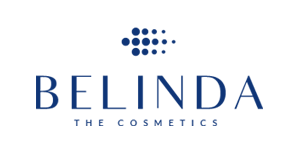Gas Appliances Regulation (EU) 2016/426
The Gas Appliances Regulation (EU) 2016/426, commonly referred to as GAR, is a crucial legislative framework for businesses manufacturing, importing, or distributing gas appliances and fittings within the European Union. This regulation ensures that gas appliances meet stringent safety, performance, and environmental standards, fostering consumer trust and harmonizing the EU market. For companies aiming to achieve CE Product Certification (CE Marking), compliance with this regulation is not just mandatory but also a strategic advantage for market access.
This article delves into the key aspects of GAR, outlining the certification process, its importance for businesses, and how it enables companies to expand their reach in the competitive global market.
What Is the Gas Appliances Regulation (EU) 2016/426?
The Gas Appliances Regulation (EU) 2016/426 establishes the requirements for the design, production, and marketing of gas appliances and fittings within the EU. It replaces the older Gas Appliances Directive (GAD) and brings enhanced clarity and updated safety requirements.
Key objectives include:
Ensuring Safety: Protecting users and the environment from potential hazards associated with gas appliances.
Harmonizing Standards: Promoting uniformity across the EU, eliminating trade barriers.
Environmental Protection: Addressing energy efficiency and emission standards.
Scope of the Regulation
GAR applies to:
Gas Appliances: Devices that burn gas for cooking, heating, hot water production, refrigeration, lighting, or washing.
Fittings: Safety and controlling devices and components designed to be incorporated into gas appliances.
Products that comply with GAR requirements must bear the CE Mark, signifying adherence to essential safety and performance standards.
Learn More About Gas Appliances Regulation (EU) 2016/426 Requirements ...

Key Requirements Under GAR
To comply with Gas Appliances Regulation (EU) 2016/426, businesses must meet several critical requirements:
Essential Health and Safety Requirements (EHSR)
Gas appliances and fittings must be designed and manufactured to prevent risks to health, safety, and property.
Technical Documentation
Comprehensive documentation proving compliance with EHSR must be prepared. This includes design specifications, risk assessments, and test reports.
Conformity Assessment Procedures
Manufacturers must select the appropriate conformity assessment modules (e.g., Module B, C2, D, or E) to demonstrate compliance.
Product Traceability
Clear identification and traceability of gas appliances and fittings are essential. Labels must include product type, batch or serial number, and manufacturer details.
User Instructions
Instructions must be provided in the language of the member state where the product is marketed, ensuring safe installation, use, and maintenance.
Certification Process for CE Marking
Achieving CE Marking under GAR involves the following steps:
1. Initial Assessment
Evaluate your product’s compliance with GAR requirements, focusing on EHSR and performance criteria.
2. Technical Documentation Preparation
Compile detailed documentation, including:
Design and manufacturing details
Risk analysis
Test reports and certificates
3. Conformity Assessment
Engage a Notified Body for specific modules, such as:
Module B: EU-type examination
Module D: Production quality assurance
Module E: Product quality assurance
4. Affixing the CE Mark
Once compliance is verified, affix the CE Mark on the product, accompanied by the Notified Body’s identification number if applicable.
5. Declaration of Conformity (DoC)
Draft and sign a Declaration of Conformity, declaring your product’s compliance with GAR.

Benefits of Compliance with GAR
For businesses seeking CE Product Certificates, compliance with GAR offers significant advantages:
Market Access: The CE Mark enables seamless entry into the EU market and beyond.
Consumer Trust: Demonstrates commitment to safety and quality.
Competitive Edge: Positions your brand as a reliable and compliant manufacturer.
Reduced Liability: Minimizes risks associated with non-compliance and product failures.
Learn More About Gas Appliances Regulation (EU) 2016/426 Audits ...
Industries Impacted by GAR
The Gas Appliances Regulation (EU) 2016/426 impacts a variety of industries, including:
Domestic Appliances: Stoves, ovens, and heaters for residential use.
Commercial Kitchens: Equipment for restaurants, hotels, and catering services.
Industrial Heating Systems: Boilers and furnaces for manufacturing facilities.
Outdoor Equipment: Barbecues, camping stoves, and patio heaters.
Healthcare: Specialized gas-powered sterilization and heating devices.
Common Challenges and Solutions
1. Complex Documentation
Solution: Work with experienced consultants to prepare accurate and comprehensive technical files.
2. Testing Requirements
Solution: Partner with accredited testing labs for precise and reliable results.
3. Language Barriers
Solution: Provide multilingual instructions and labeling to meet local requirements.
Learn More About Gas Appliances Regulation (EU) 2016/426 Benefits ...

Conclusion
Complying with the Gas Appliances Regulation (EU) 2016/426 is a critical step for businesses seeking to market their products within the European Union. Beyond legal compliance, it signifies a commitment to safety, quality, and environmental responsibility, enhancing your brand’s reputation and marketability.
Are you ready to start your journey toward CE Marking certification? Contact us today to ensure your gas appliances meet all regulatory requirements and gain a competitive edge in the global market.
- Get Your Legal Advice
- All Experts Lawyers
- All Experts Lawyers
- Great Discounted Rates
- Fighting for The Average Joe
- Get The Money You Deserve
- All Experts Lawyers
- Justice For All


Point of View
Our Vision
A lawyer or attorney is a person who practices law, as an advocate, attorney, attorney at law, barrister, barrister-at-law, bar-at-law, civil law notary, counsel, counselor, counselor, counselor at law, solicitor, chartered legal executive, or public servant preparing, interpreting and applying law, but not as a paralegal or charter executive secretary. Working as a lawyer involves the practical application of abstract legal theories and knowledge to solve specific individualized problems, or to advance the interests of those who hire lawyers to perform legal services.

